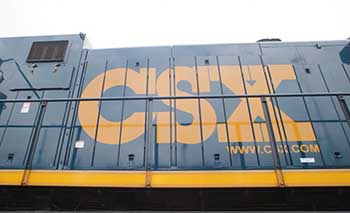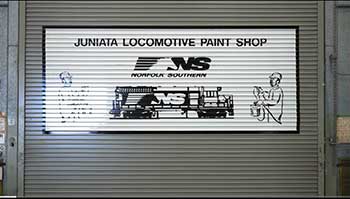The eastern United States is home to two major freight railroad companies, CSX and Norfolk Southern. Both provide vital transportation services, connecting producers and consumers across the region.
When it comes to choosing between CSX and Norfolk Southern for shipping, many factors should be considered. This article provides an in-depth comparison of these two railroad giants.
A Brief Comparison Table
| Category | CSX | Norfolk Southern |
| Headquarters | Jacksonville, FL | Norfolk, VA |
| Network Mileage | ~21,000 miles | ~19,500 miles |
| Employees | ~21,000 | ~26,000 |
| Daily Trains | ~1,200 | ~1,000 |
| 2021 Carloads | 1.5 million | 1.4 million |
| Commodities | Diverse mix including coal, intermodal, automotive, agriculture, etc. | Diverse mix including intermodal, agriculture, metals, automotive |
| Intermodal Share | 30% of volumes | 50% of volumes |
| Coal Share | Major coal transporter | Lower coal volumes |
| Financial Performance | Higher profit margins | Slightly lower profitability |
| Network Reach | New England, Canada, Southeast | Upper Midwest, Mississippi |
| Key Advantages | Broad network, coal expertise, reliability, financials | Intermodal leader, efficiency, safety, diverse traffic |
| Key Challenges | Operational issues in Northeast, legal risks, coal declines | Congestion in Chicago, crew availability, weather impacts |
Overview Of CSX
CSX Corporation is one of the largest railroad companies in North America. Headquartered in Jacksonville, Florida, CSX operates a network spanning 21,000 miles across 23 eastern states, the District of Columbia, and parts of Canada.
Some key facts about CSX:

- Founded in 1980 from the Chessie System and Seaboard Coast Line Industries
- Employs around 21,000 people
- Transports a wide variety of commodities including automobiles, agriculture, ethanol, coal, fertilizers, food, minerals, and more
- Major rail yards and intermodal terminals located in Baltimore, Chicago, Cincinnati, Detroit, Louisville, Memphis, and more
- Connects to all major eastern seaports along the Atlantic and Gulf coasts
- Current CEO is James M. Foote
CSX moves an average of around 1,200 trains per day and transported over 1.5 million carloads of freight in 2021. The company has a diverse mix of merchandise, intermodal, coal, industrial, and agricultural shipments.
Key advantages of using CSX include:
- Vast network reaching nearly two-thirds of American consumers
- Efficient routes and well-developed infrastructure
- Strong on-time performance and shipment reliability
- High-capacity double-stack intermodal trains
- Experience transporting automobiles and finished vehicles
- Connectivity between major ports, metro areas, and inland markets
Overview Of Norfolk Southern
Norfolk Southern Corporation is another freight railroad giant based in Norfolk, Virginia. The company operates approximately 19,500 route miles spanning 22 eastern states.
Here are some vital stats on Norfolk Southern:

- Formed in 1990 from the consolidation of Southern Railway and Norfolk and Western Railway
- Employs over 26,000 people
- Major commodities hauled include intermodal, coal, agriculture, metals, construction materials, and automobiles
- Extensive yard and terminal facilities in cities like Atlanta, Birmingham, Chicago, Cincinnati, Cleveland, Detroit, Kansas City, Norfolk, and more
- Connects to eastern coastal ports and the Gulf of Mexico
- Current CEO is Alan H. Shaw
On average, Norfolk Southern moves around 1,000 trains and 350,000 carloads of freight each day. The company’s intermodal volumes have been growing substantially in recent years.
Advantages of Norfolk Southern include:
- Broad reach across the Eastern U.S. and connections to all major ports
- Significantly invests in infrastructure and technology
- Strong performance metrics for on-time arrivals and transit speeds
- Experience with climate-controlled shipments and automotive transport
- Diverse mix of freight commodities transported
- High-capacity corridors optimized for intermodal traffic
Direct Comparison Of CSX And Norfolk Southern
When directly comparing CSX and Norfolk Southern, there are some important similarities and differences to note:
Network Coverage
- Both CSX and Norfolk Southern serve much of the same eastern U.S. region. CSX has a slightly more northern reach into New England while Norfolk Southern extends further west into Mississippi.
Customers and Industries Served
- The two railroads transport freight for many of the same major industries like agriculture, automotive, construction, energy, intermodal, and more. Both connect key ports, metro areas, and inland markets.
Freight Volume
- CSX and Norfolk Southern transport similar annual volumes. In 2021, CSX moved around 1.5 million carloads while Norfolk Southern transported 1.4 million.
Technology and Efficiency
- Both railroads invest heavily in technology, infrastructure, and operating practices to improve safety, efficiency, and reliability. CSX and Norfolk Southern have comparable metrics for on-time performance.
Financial Performance
- CSX has historically generated slightly higher profit margins and revenue growth. But Norfolk Southern produces strong financial results as well. Both railroads reward shareholders through dividends and buybacks.
Intermodal Focus
- Intermodal transport of shipping containers and trailers is a major focus for both companies. Around 50% of Norfolk Southern’s volumes are intermodal compared to 30% for CSX.
Coal Transportation
- While coal shipments are declining across the industry, CSX still moves much higher volumes than Norfolk Southern. In 2021, CSX transported around 405,000 carloads of coal while Norfolk Southern handled just 59,000.
Also watch this video!
Now let’s take a more detailed look at the pros and cons of using CSX Vs. Norfolk Southern.
Pros And Cons Of CSX
Pros
There are several beneficial reasons to select CSX for shipping needs:
- Broad reach – Extensive network throughout the entire Eastern U.S. and Canada. Provides last mile service to many markets.
- Reliability – Consistent transit times and on-time performance. Uses advanced technology for precision dispatching.
- Experience with automotives – Customized services for finished vehicles, handling over 1 million units annually.
- Coal transport capabilities – Still moves high volumes of coal from mines to power plants and ports for export.
- Intermodal options – Large network of intermodal ramps and corridors optimized for container transport.
- Agricultural shipping – Strong capabilities in grain, ethanol, fertilizer, food product transport. Connects Midwest farms to consumers.
- Industrial markets – Serves many raw materials and manufacturing markets like chemicals, metals, minerals, waste, lumber, and aggregates.
- Financial performance – Continues to deliver steady revenue and profit growth for shareholders.
Cons
Here are a few of the downsides associated with CSX:
- Operational challenges in Northeast – Faces congestion and service issues in dense Northeast area which can increase costs.
- Ongoing litigation risks – Subject to various legal claims and lawsuits relating to operations, fuel surcharges, etc.
- Declining coal volumes – Long-term headwinds as utilities shift toward natural gas and renewable power generation.
- Cyclical markets – Exposed to fluctuations in industrial, construction, and energy markets. Intermodal also faces competition from trucking.
- Difficulty attracting younger workers – Like other railroads, struggles to recruit younger employees to the industry.
- Capital spending required – Continued investments needed in infrastructure, technology, equipment to maintain and improve network.
- Environmental concerns – Rail operations have impacts like emissions and can raise concerns about transporting hazardous materials.
Pros And Cons Of Norfolk Southern
Pros
What are some of the advantages of using Norfolk Southern?
- Efficiency focus – Emphasizes precise operations and velocity to provide reliable service. Invests in infrastructure enhancements.
- Intermodal leader – Nearly 50% of volumes are intermodal. Operates vast network of corridors, hubs, and terminals focused on container transport.
- Automotive capabilities – Customized services for finished vehicles. Connects assembly plants to dealers with specially equipped auto trains.
- Diverse traffic – Not overly reliant on any single commodity like coal. Benefits from diverse mix of rail shipments.
- Solid technology – Utilizes latest tech for tracking, automation, inspections, and other innovations to improve operations.
- Safety commitment – Strong safety practices. Consistently recognized for low employee injury rates.
- Financial discipline – Maintains top tier profit margins in the railroad industry. Committed to shareholder returns.
- Environmental advantage – Rail is lower emissions than trucking. Norfolk Southern is enhancing efficiency and implementing carbon reduction initiatives.
Cons
Norfolk Southern does have some potential disadvantages to consider as well:
- Smaller network reach – Does not serve New England, Canada, or Florida markets covered by CSX.
- Congestion in Chicago – Faces significant rail traffic bottlenecks in and around the Chicago terminal area which can cause delays.
- Crew availability – occasional service disruptions caused by lack of crew availability in certain locations.
- Weather impacts – Network covers many mountainous areas which are prone to disruptions from severe weather.
- Ongoing coal declines – While much lower reliance than CSX, coal volumes will likely continue trending down over time.
- Trucking and intermodal competition – Growing competition from trucking industry and other railroads in the intermodal sector.
- Lower profitability than CSX – Norfolk Southern has delivered lower profit margins than CSX in recent years.
- Workforce challenges – Also has difficulty recruiting younger skilled employees to the railroad industry.
- Capital spending required – Continued infrastructure and technology investments needed to maintain fluid operations.
Frequently Asked Questions (FAQ)
Both CSX and Norfolk Southern are high-quality railroads with extensive networks serving the Eastern U.S. CSX has advantages in reach, coal shipping, and financials. Norfolk Southern leads in intermodal volumes, efficiency, and diversity of traffic. For shippers, the best option often depends on specific commodities, origin/destination points, and other requirements.
CSX operates a larger rail network spanning around 21,000 miles compared to Norfolk Southern’s 19,500 miles. CSX transports slightly higher annual volumes as well – around 1.2 million carloads Vs. 1 million for Norfolk Southern. However, the two railroads are comparable in size, coverage, volumes, and market reach overall.
No, CSX and Norfolk Southern are separate competing railroad companies with different networks in the Eastern U.S. There is some overlap in markets served, but the two networks have distinct coverage areas, corridors, and terminal facilities. Both transport freight for various industries but their service offerings, volumes, and financial profiles show key differences.
CSX can offer railroad employees good careers with competitive pay and benefits. Positions such as conductors, engineers, and technicians earn strong railroad industry wages. CSX highlights a work environment focused on safety and employee development. However, the railroad industry does have challenges around quality of life, erratic schedules, and demanding physical nature that may make it less appealing to some workers compared to other fields.
Conclusion
In summary, both CSX and Norfolk Southern provide vital freight transportation services across much of the Eastern United States and Canada. They connect producers, consumers, and ports through expansive interconnected rail networks. Shippers have two quality options for rail-based shipping in the region.
CSX offers a broader network reach, larger volumes, and expertise in automotive and coal transport. Norfolk Southern counters with a major intermodal focus, efficiency advances, and a more diverse traffic mix. While both railroads deliver value and have areas to improve, the best option mainly comes down to specific transportation requirements.
